Growing and Maintaining a Healthy Lawn
There are many rules that apply in order to have a beautiful healthy turf. Apart from these rules, there is the issue of dealing with the many insects that attack our lawns, feeding on them, and converting what once was a beautiful lawn, to a lawn that is sick, dying, and far from healthy-looking.
In this section, we will be looking at some of these lawn pests and what methods can be taken to counterattack and bring them under control.
St. Augustinegrass
St. Augustinegrass is a turf that has its share of problems with turf insects which include:
Chinch bug
Chinch bugs are most active during the summer months. Their attack on turf can cause a beautiful lawn to be reduced to nothing but brown dying out patches. Chinch bugs are small insects that have two pairs of wings that are folded on their backs.
The adult chinch bugs are black and white. The color of chinch bugs in their early nymphal stage is yellow, and as they reach the juvenile stage they turn red having a light-colored band across their abdomen. One female can lay up to 500 eggs. Eggs are laid on leaves, on crevices in nodes, roots, etc.
Within 2-3 weeks after hatching the nymph takes about 6 weeks to reach maturity.
Signs of chinch bugs
An infected lawn will turn yellow and brown because of their constant feeding on turf. Chinch bugs feed by piercing the grass leaf, sucking the juice, and releasing a toxin that causes injury. Another sure sign of chinch bug attack is grass dying out along house foundation, curbs, sidewalks, or driveways.
Because chinch bugs love the sun they are most active in areas where the turf is exposed to full sunlight. A test that can be performed to detect if your problem is, in fact, chinch bugs is to use a large can, cut both ends off, press one end of the can into the turf and fill the can with a pre-mixed solution of water and dish liquid. If chinch bugs are present you will see them floating on the top or surface of the solution within 5 minutes of applying.
Chinch bug control
To control chinch bugs there are many product brands that you can use which include: Talstar, Upstar, and Bug b gone are just a few chemicals that can be used. Remember to read and follow the label as directed because the label is the law. Also if you can reduce the amount of nitrogen-based fertilizer during the summer months because chinch bugs are more active at this time of the year. Applying nitrogen at this time will increase chinch bug infestation because chinch bug loves nitrogen. If you want your lawn to maintain that nice green color, consider using an iron source because iron will give you that green without that excessive growth.
Sod Webworms adult moth
Another pest to St Augustine grass is webworms. Webworms are active in April-May and pass through several stages until they reach maturity. In June webworm goes through another cycle in which woven cocoons are made from silk and dirt.
About 2 weeks later adult moths emerge and begin to mate. The female moths deposit the eggs over the lawn surface, laying hundreds of eggs. It takes about 1 week for the eggs to hatch. Once the eggs hatch the larvae spin the web and begin to feed on grass.
Sod webworm identification
Sod webworms are one inch long. The moth or adult is 1/2 – 3/4 inches long. The adult also has yellow or brown marks on their wings, which are often folded.
Signs of sod webworms
Webworms feed on the undersides of the leaves. One common sign of the presence of sod webworm is damage in the form of ragged brown spots on the lawn. As worms keep feeding the brown spots or patches begin to spread or get larger. Webworms are most active in turf areas that are directly exposed to sunlight.
Control methods
Chemicals such as insecticidal soaps, Bacillus thuringiensis, and sevin are among the many chemicals that can be used. Make sure to follow directions when applying these chemicals because the label is the law. Once you apply as directed, your lawn should bounce back to its previous appearance.
Armyworms identification
Another pest of turf is Armyworms. Armyworms are small green or brown caterpillars with stripes. They are called Armyworms because they travel in groups. Armyworms are the main pest of grass. Their eggs are laid in masses and hatches in about 5-10 days. The caterpillars pupate and emerge as adults in about 10 days.
Armyworm signs
One sign that your turf is infested by Armyworms is that grass starts to die out in patches. Another sign to look out for is the edges of the grass blades are chewed, and some of the grass blades are eaten completely.
Control methods
Control methods include cutting the lawn at the proper height and applying insecticides. Remember to read and follow the label because the label is the law.
Also, nature has a way of helping out. These caterpillars are a favorite dish of birds that will have a feast on them.
As you follow these measures, watch your turf bounce back to good health.
Grass looper moth
Grass loopers are striped female moths that are most active in late summer and early fall. They lay eggs in the quantity of about 300-400 eggs. The eggs are laid within a week and hatches in about 3-4 days. The larvae worm begins to feed on the grass blades as the worm grows.
The larvae grow over a 2-3 week period, it’s appetite increases consuming the whole grass blade. The mature larvae then spin a cocoon and in about a week to ten days, the pupa develops into an adult. The moth then emerges.
Grass loopers sign
Signs that grass loopers are present are, grass leaves being partially or completely destroyed. This is due to the larvae reaching maturity. Another sign is birds moving around on the lawn feeding.
Control methods
When treating turf for this pest problem do not irrigate the lawn for about 24 hrs. This allows the insects to come in contact with the treated area. Once this happens and the insects begin feeding, it’s only a matter of time before death sets in.
Monitor your grass for the next week or two reapplying chemicals as needed. Make sure to read and follow the label because the label is the law.
Mole crickets
Mole crickets pest can cause major damage to turf causing a beautiful lawn to become an eyesore because of the level of destruction that they cause. The bodies of these insects are brown to grey. At maturity, the insects are about one inch to an inch and a quarter.
This insect has wings with front legs that resemble a spade. Eggs are laid in April and May. The babies resemble the parent except they are smaller without wings.
Signs of mole crickets
Mole crickets are attracted to lawns that are spongy with a build-up of thick non-decomposed grass clippings. Moles are most active during the warmer months. This garden pest causes damage by making tunnels in the ground severing grassroots and also feeding on these roots and grass blades.
When this happens the lawn turns brown and begins to die out in patches. Animals such as Armadillos and Raccoons may cause further damage by digging in the lawn looking for moles to feed on.
Mole crickets are most active at night time.
A sure way to test for mole crickets is to mix together a solution of 1 1/2 tbs of dish liquid in a gallon of water. Apply this mixture to the lawn area, and make sure that enough of this mixture reaches the root zone of the grass.
If moles are present you will see them come up to the surface within 2-5 minutes after applying this solution.
Control methods
There are many insecticides at your disposal that can be used to bring this pest problem under control. One insecticide that is effective in controlling this insect is Talstar. Remember when using this insecticide or any other insecticide read and follow directions or labels because the label is the law.
Turf insects and their control
Zoysiagrass Pests
Larvae of billbugs
The main pest problem of zoysia grass is billbugs and lawn caterpillars. To learn more about lawn caterpillars and their control refer to the section in this article that deals with St. Augustine grass. What we will be looking at is billbugs and how to control them.
The adult billbugs are either black, brown, or grey and have a curved snout. The baby or larvae stage of these bugs is white and has a brown head with a curved body and no legs. Females lay their eggs in the grass and the eggs hatch within a few days and begin feeding on turf.
Larvae pupate in the soil and then emerge as adults. Adult billbugs are 1/2 to 1 inch long.
Billbug signs
Common signs of billbugs are dead spots on the lawn that don’t turn green even after it gets water. This happens because the adult bugs cut in the grass stems to deposit eggs. Once eggs are laid they hatch in about 3 weeks. After eggs hatch the larvae begin to feed on the inside of the blade of grass sucking out the juice.
Larvae also eat the grass stems and roots. If turf comes up easily when pulled on, this could be a sign of billbugs. A more sure sign would be hump-backed grubs with brown heads and white bodies laying on the soil surface once you would have removed dead grass.
Control methods
Use an insecticide that causes stomach poisoning for these pests. Read and follow the label because the label is the law. Once the area has been treated and bugs are killed off, reseeding or replanting grass in those areas is very important. After several weeks you should have a full turf again.
Centipedegrass Pests
Centipede grass can make a beautiful lawn once it is properly maintained. The common pest problems of this turf can cause the grass to die if action is not taken right away. These pests include lawn caterpillars, mole crickets, grubs, and spittlebugs.
To learn more about mole crickets, grubs, and lawn caterpillars refer to the section on St. Augustinegrass in this article that deals with mole crickets, lawn caterpillars, and grubs.
Spittlebug
Spittlebugs their damage and how to control them
The adult bugs are black, tan, or brown with an oval shape and sharp spines on their hind legs. Babies or nymphs are yellow to yellow-green in color. They have no wings but resemble their parents and can be found in the spittle foam.
Sign of spittlebugs
Signs of the presence of these bugs are foamy masses of spittle that are caused by the nymph sucking the plant juice. As they feed they move an excessive amount of water and carbohydrates that cause an abundance of fluid to be produced. They cover themselves with this fluid.
The spittle is produced by bubbling air from the tip of their abdomen that is covered in this fluid. The spittle foam that is produced protects the nymphs from other insects that may feed on them.
Control methods
Insecticidal soaps are effective in the control of these insects. Read the label and follow as directed.
Bahiagrass Pests
Of the many insects that attack Bahiagrass, mole crickets cause the most serious damage. Signs include tunnels or mounds that are constructed by this insect. Mole crickets sever roots from grass while feeding on shoots and roots of the grass.
In this case, grass will show signs of wilting. To learn more about mole crickets and their control refer to the section that discusses St. Augustinegrass.
Bermudagrass Pests
Bermudagrass is a fine grass that grows very thick and can withstand foot traffic. That is why this turf is mostly used as turf for sport. When maintained in the right way this grass is very beautiful, but there are some garden pests that would seek to destroy this turf by using it for food.
Among many pests that invade this turf are mole crickets, sod webworms, cutworms, grass loopers, and bermudagrass mites. To learn more about mole crickets, sod webworms, and grass loppers refer to the section that discusses St. Augustinegrass.
Let’s take a look at cutworms and bermudagrass mites to get a better understanding of their life cycle and control.
Cutworms
The eggs of cutworms are laid on weeds that grow in the garden or near the soil surface. Eggs hatch in about 2-5 days after being laid and overwinter as larvae. As soon as the weather warms up the worms burrow into the soil where they pupate for about 7-8 days and then emerge as adults.
The larvae, however, feed on grass parts causing damage. Cutworms are fat, black, grey, or brown-bodied. Some are striped and even have spots. They can grow anywhere from 1 1/2 to 2 inches.
Signs of cutworms
The area of the lawn that is attacked by cutworms will have brown patches that range from 1-to 2 inches wide. The edges of the grass blades are chewed evenly or damage can be seen from the soil surface.
Control methods
Apply insecticides late in the afternoon because this is when insects begin to feed. There are many brands you can use to control these insects.
Turf insects and their control
Bermudagrass mites
There is also the bermudagrass mites that cause damage to turf. Eggs are laid by the female and hatches in 2-3 days. The nymphs look somewhat like a worm. The mites are spread either by attaching themselves to animals or carried by the wind.
Signs of Bermudagrass mites
The turf slows down in its growth when it should be actively growing during spring, grass appears yellow and then turns brown with irregular shapes.
Control methods
An effective way to control these mites is to apply Miticides or Insecticidal soap to the turf area.
The final word
Even the best-kept turf has its share of challenges, but with an action plan along with some tender loving care, any lawn can bounce back and regain its beauty.
About the author
Norman loves being in the garden, both at home and for his job....
he is 'Natures Little helper' being outdoors, growing his vegetables and flowers from an early age.
Now having spent over 22 years in the profession he want to give some of his knowledge to others...
his vast array of hints and tips you will find scattered over this site will help you no end growing plants in your garden.

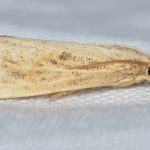

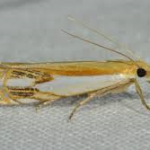
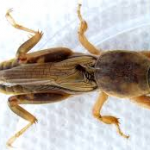
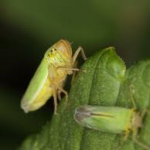
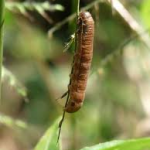
Hi Norman
Wow what a site – I can really see that you have been in the business for some time already you really know your stuff.
I have bookmarked your page for future reference to help me resolving all the creatures in my garden. Unfortunately I do not have green fingers so I can use all the help I can get.
Next step is to buy your domain – go for it.
Hello Elmarie glad that i can help, thanks for those words they mean so much to me.And i feel so encourage thanks a million and thanks for your helpful advice. Have a good day.
Thanks a million glad i can help, your words mean so much to me and is such and encouragement God bless and have a good day, thanks again.
Your site is very informative. I am a gardener myself and learned a lot of useful information on your site. I really liked your Plant disease section as I have struggled with this in the past. I didn’t notice anything on garden beetles. Maybe I just missed it. If not, maybe giving a description on them and how to rid them.
Hello Mandy nice to meet you, glad that i could help and thanks for that bit of information. Have a good day.
Thank you for your incite. You have enlightened me to many aspects of growing my own vegetables and especially growing herbs. I never knew just how to handle herbs till now. I can tell you, I have added your website to my favorites because of the wealth of information you have presented. You have really done your homework. Good job!
John
Good evening John thanks for those very kind words, I am glad that i could help and please do tell others about this website thanks again and have a good day.
Wow there sure is a lot of bugs out there! Makes keeping a lawn more complicated than just watering it!
We have been battling with our lawn this year to get any green, it is brown all over so it is difficult to tell what the exact problem is.
I am interested in which product has the iron which makes the lawn green but without lots of growth.
Also what would you recommend for an all around insecticide to cover all bugs but is fairly pet friendly?
Cheers
Nichole
Hello Nichole it is so nice to meet you, Having a beautiful is not that hard to care of it is just a matter of knowing how. The first in have a beautiful lawn is first now about your lawn itself, like mowing height, water requirements, soil type. These are some of the basic that you maintain a healthy lawn on. Even when it comes to pest and disease knowing what type grass you have and talking to your plant nurseryman, you will know what pest and disease to look out for. And as for chemicals there is no chemical that i know of that take care of every pest, there are some chemical that can take care of a whole range pest, but as good as they may be they are still limited. Once you know which pest attacks your grass it just a matter of using that chemical that targets those insects. Chemical you buy will let you how safe it is around animals and children. Hopes this helps have a good day.
I have a garden myself so I know what it means having to struggle with many of these bugs. In the area where I live, the Webworms are a big problem, especially in the late spring season, just like you said.
I usually try to avoid using chemicals on trees and plants, but in this case I guess there aren’t too many options remained. So I will try those substances against Webworms…
Winning the war on pest can be a hard at times but as you keep working at it you will get the results you are looking for. Always remember to read label and follow, always wear protective clothing. Have a good day and please do tell others about my website. Thanks again and best of luck to you.
Hello Norman, I did not know so much went into taking care of your lawn. I have always been a renter and the associations or landlords had landscapers to come out and do the lawn for me. However, I know many individuals who are very proud of their lawns and for good reason especially if they are going through the pains of taking care of it. You have a lot of good information here. I think the best information is what is the cause and the symptoms of that cause. The next piece of information I think is absolutely vital and that is how do you get rid or make your lawn better. Phenomenal work.~Sherry
Hello Sherry I am glad that you enjoyed that article, lawns are just like us in a way they need tender loving care. Thanks again and have a good day and please do tell others about my website. ggardenofedengardencenter.com